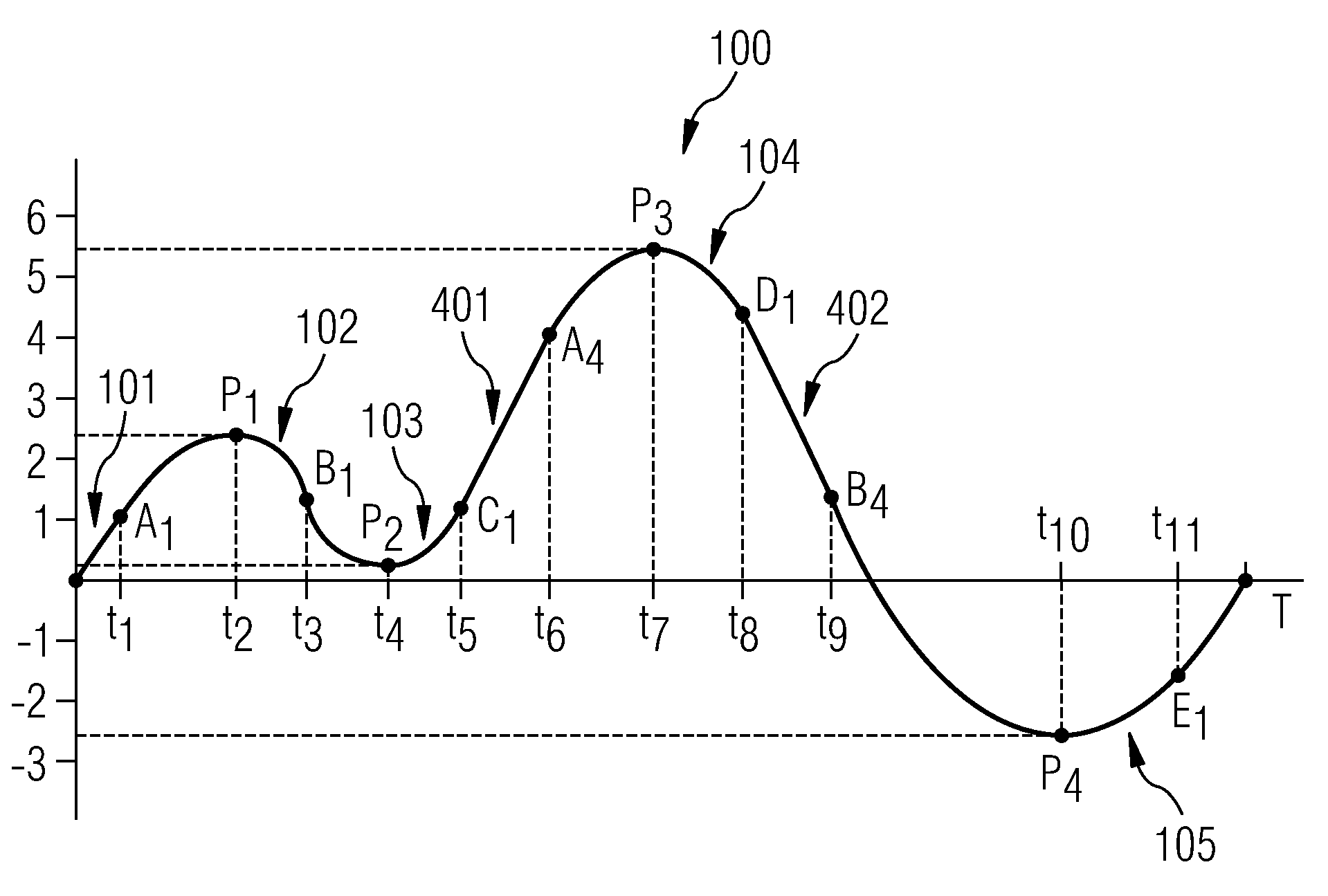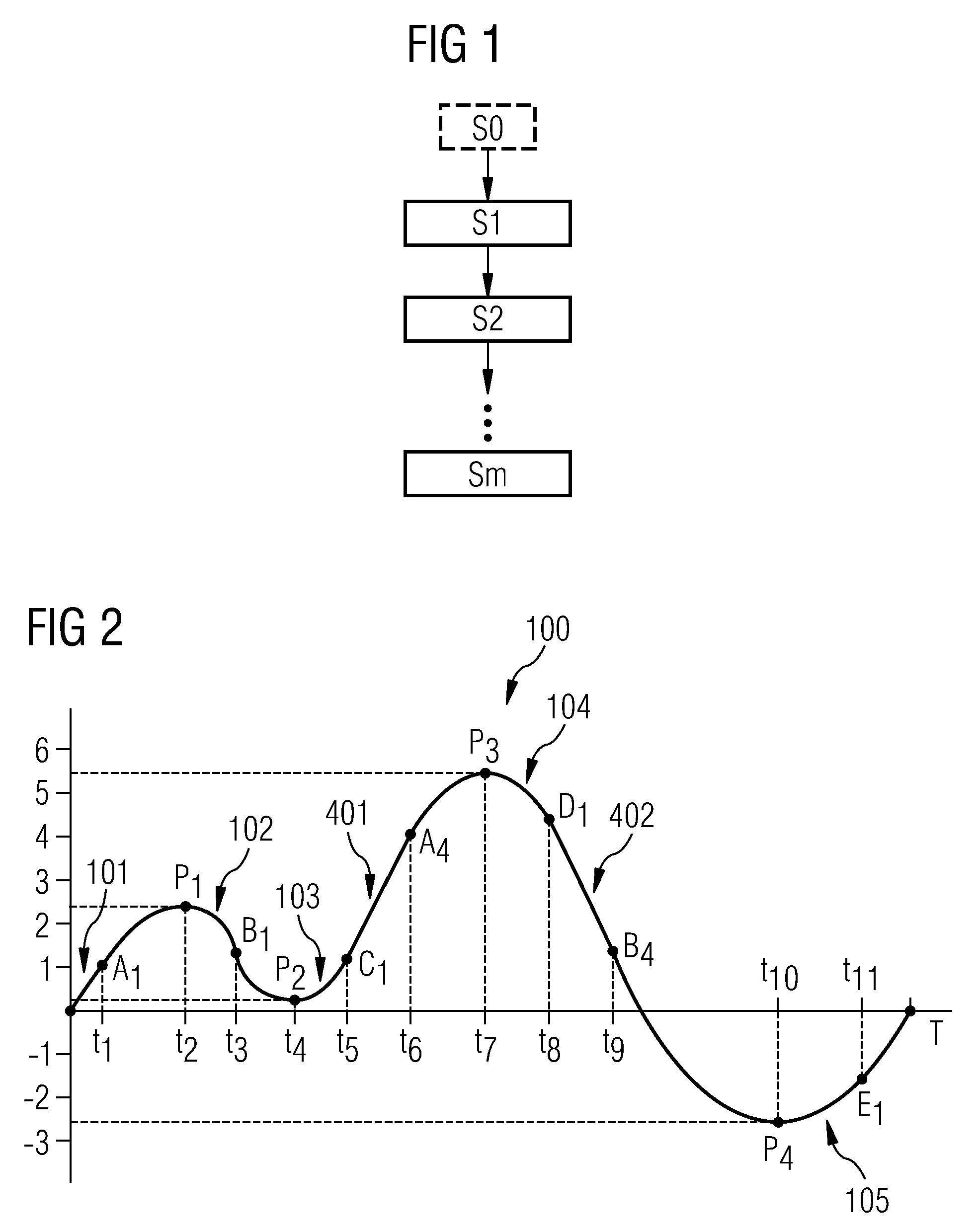Determining an equivalent mechanical load
a technology of mechanical load and equivalent, applied in the direction of force/torque/work measurement apparatus, instruments, testing/monitoring control system, etc., can solve the problems of inability to update the count value of numbers, severe drawbacks of the rainflow-counting method, etc., to improve the accuracy of the method, reduce the risk of oversampling, and improve the method reliability and effectiveness
- Summary
- Abstract
- Description
- Claims
- Application Information
AI Technical Summary
Benefits of technology
Problems solved by technology
Method used
Image
Examples
Embodiment Construction
[0067]The illustrations in the drawings are schematical.
[0068]FIG. 1 illustrates a method for determining an equivalent mechanical load according to an exemplary embodiment of the invention. The method concerns the determination of an equivalent mechanical load of a component, in particular of a component of a machine, the component being subjected to a dynamic mechanical loading. The machine can be, for instance, a wind turbine. The component can be, for instance a base of the wind turbine or a blade of the wind turbine, particularly a blade root of the wind turbine. In case of wind turbine components such as the base or the blade root, the mechanical load may be, for instance, the load along the direction of the wind. The method comprises counting the number of load half-cycles of the component. The load half-cycles may belong to one or more predetermined ranges of loads and may occur during an explicitly or implicitly predefined time interval. The time interval may be for instanc...
PUM
| Property | Measurement | Unit |
|---|---|---|
| frequency | aaaaa | aaaaa |
| frequency | aaaaa | aaaaa |
| frequency | aaaaa | aaaaa |
Abstract
Description
Claims
Application Information
 Login to View More
Login to View More - R&D
- Intellectual Property
- Life Sciences
- Materials
- Tech Scout
- Unparalleled Data Quality
- Higher Quality Content
- 60% Fewer Hallucinations
Browse by: Latest US Patents, China's latest patents, Technical Efficacy Thesaurus, Application Domain, Technology Topic, Popular Technical Reports.
© 2025 PatSnap. All rights reserved.Legal|Privacy policy|Modern Slavery Act Transparency Statement|Sitemap|About US| Contact US: help@patsnap.com


